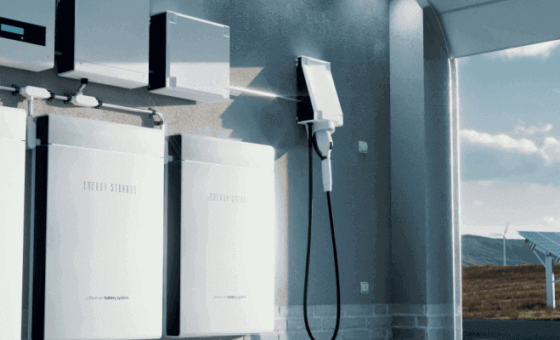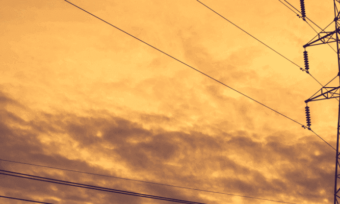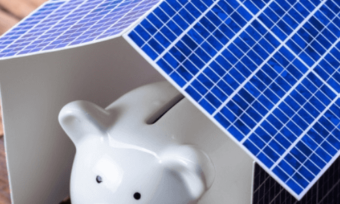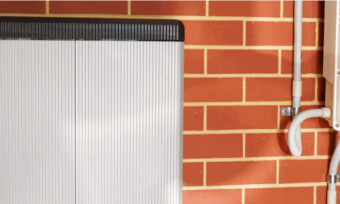Best Solar Feed In Tariff NSW
Looking for a better solar plan or provider in Sydney? We compare plans and providers operating in and around Sydney to help you find the best fit for your needs.

Start with your postcode
to compare 1,500+ Canstar Blue expert rated plans
Receive an additional $50 OFF your energy bill every year you have Kogan Energy & Kogan Internet. T&Cs apply
Showing 10 of 65 results
Unsure of a term in the above table? View glossary
The initial results in the table above are sorted by Solar feed-in tariff (High-Low) , then Price/year (estimated) including conditional discount (Low-High) , then Brand Satisfaction (High-Low) . Additional filters may have been applied, which impact the results displayed in the table - filters can be applied or removed at any time.
Latest in solar energy
Introduction to Solar Feed-in Tariffs NSW
Australians are embracing solar, thanks to the potential for cheaper energy costs, a lower reliance on the electricity grid, and the value panels can add to your home. But installing a solar panel system is only the first step in making the most of solar power – you’ll also want to find a home electricity plan with a good solar feed-in tariff.
The options available to you will vary depending on your location. But residents in New South Wales have a range of providers and plans to pick from. We’ll take you through the solar feed-in tariffs on offer in NSW below.
On this page:
- Which provider has the best solar feed-in tariff in NSW?
- The best solar feed-in tariffs in NSW
- Which is the best solar energy provider?
- How do I know what my solar feed-in tariff is?
- Is there a minimum feed-in tariff in NSW?
- Are solar-specific plans available in NSW?
- Energy rates or solar feed-in tariffs: What’s more important?
- Is solar worth it in NSW?
Which provider has the best solar feed-in tariff in NSW?
GloBird Energy currently has the best solar feed-in tariff in NSW, where eligible customers on a single rate tariff can get 12 cents per kilowatt hour (c/kWh) for the first 8kWh before receiving a rate of 4c/kWh.
The best minimum and maximum solar feed-in tariffs in NSW
In the table below, you’ll find a list of minimum and maximum solar feed-in tariffs available from retailers in New South Wales. Some of these companies may not operate in all areas of NSW, while some FiTs may only be available when certain conditions are satisfied. Please check each provider’s website for further details.
Here are the plans with the lowest solar feed-in tariffs from the retailers on our database. These costs are based on the Ausgrid network in Sydney but prices will vary depending on your circumstances. We show one product per retailer, listed in order of lowest price first. Annual price estimates assume general energy usage of 3900kWh/year for a residential customer on a single rate tariff. Price estimates exclude solar feed-in tariff credits. Our database may not cover all deals in your area, please check retailer websites for up to date information.
Here are the plans with the highest solar feed-in tariffs from the retailers on our database. These costs are based on the Ausgrid network in Sydney but prices will vary depending on your circumstances. We show one product per retailer, listed in order of lowest price first. Annual price estimates assume general energy usage of 3900kWh/year for a residential customer on a single rate tariff. Price estimates exclude solar feed-in tariff credits. Our database may not cover all deals in your area, please check retailer websites for up to date information.
Which is the best solar energy provider?
Lumo Energy is currently ranked as Australia’s best solar energy provider, topping our customer satisfaction ratings in 2025.
The Aussie-owned company scored five-star reviews for its value for money, customer service, bill and cost clarity, ease of sign-up and overall satisfaction. Lumo Energy doesn’t currently offer any solar specific plans or feed-in tariffs in NSW.
How do I know what my solar feed-in tariff is?
- Your solar feed-in tariff rate (per kWh) can be found by reading your energy bill, listed under the summary charges typically found on its second page — this section also covers how much energy you’ve exported back into the grid and the bill credits you’ve received for it.
- Your FiT will be listed on the relevant energy fact sheet on your energy retailer’s website, detailing your plan’s rates, fees, charges and other plan details — they can usually be found at the bottom of your retailer’s homepage.
Is there a minimum feed-in tariff in NSW?
There’s no set minimum feed-in tariff rate in NSW.
However, here is a benchmark range of 4.0 to 6.3c/kWh, according to NSW’s Independent Pricing and Regulatory Tribunal (IPART).
Unlike Victoria or regional Queensland, where there are a minimum FiTs of 3.3c/kWh and 12.377c/kWh respectively, solar customers in NSW will have to pay extra attention to a plan’s FiT rate or risk signing up to an uncompetitive deal.
Starting July 1, 2025, the Endeavour Energy network will be rolling out a sun tax, taxing Aussies 0.7c/kWh for exporting excess energy above the free threshold during peak times.
Ausgrid network will also be rolling out a two-way tariff where 5kW customers should roughly expect an annual bill increase of $6.60.
To avoid the sun tax, you can install a solar battery to store excess energy for use during peak times and a net meter to prioritise the self-consumption of solar-generated energy.
Are there solar-specific plans available in NSW?
Some energy retailers offer solar-specific plans for customers looking to maximise returns on their solar systems. However, these are not always publicly available.
It could be a short-term promotion or it may be a case where customers must purchase an eligible PV system through an energy retailer’s third-party solar installation company.
We recommend checking the provider’s website for their terms and conditions.
Energy rates or feed-in tariff: What’s more important in NSW?
In NSW, which is more important comes down to which option results in the biggest reduction on your final energy bill.
While feed-in tariffs will make a difference to your power bills if you’re generating enough solar-derived electricity to feed back into the grid, you should still be wary of the rates you’re paying.
We recommend assessing the following when weighing your options:
- Electricity usage rates
- Supply charges
- Solar FiTs
Feed-in tariffs (FiT) are more important than energy rates if they save you more than you’re spending on a solar plan with higher base rates. However, please keep in mind that not all plans with higher FiTs automatically translate to higher base rates.
On the flipside, you may find that an energy plan with inflated base rates will cancel out any guarantees of a credit on your next bill.
Ultimately, which is more important also comes down to your personal needs and circumstances, such as:
- The size or capacity of your solar system
- If you’re opting for a net metering arrangement
- If you plan to install a new solar system, how long is its payback period
Conversely, if your solar PV system is exporting plenty of power, you may be able to justify paying higher electricity rates in exchange for a high FiT.
However, if you have a small solar system (e.g. 1.5 kW) producing little excess energy to be exported into the grid, a plan with lower base rates may be a more cost-effective option.
Some customers may also choose to have a net meter installed, allowing them to consume solar-generated electricity before exporting any excess back to the grid in exchange for a bill credit. While net metering may affect how you’re earning on a solar FiT, it’s important to calculate how much net metering is also saving you in the long run.
If you’re planning to install a solar system, the first thing to do is calculate the payback period — this refers to the time it takes for the savings derived from a solar system to cover its initial cost.
Is solar worth it in NSW?
Moving one step off the grid in NSW can be made possible by installing solar, and is a great way for households to become more self-sufficient.
However, unlocking value from a solar system usually takes time, so don’t expect a return on your investment overnight, even if you manage to snag a good solar rebate.
With PV systems costing well into the thousands, it’s incredibly important you do your homework.
Just like it’s equally important to review energy prices frequently, regardless of whether you have solar or not. This way, you stay on top of the latest deals in your area.
About our electricity experts
 Tara Donnelly: Utilities Editor
Tara Donnelly: Utilities Editor
Tara Donnelly is Canstar Blue’s Utilities Editor, leading the team that focuses on energy, telecommunications and consumer technology. She has spent more than a decade covering these topics in Australia, the US and Canada, and has authored over 500 Canstar Blue articles.
Her expertise has seen her appear in national media including 9 News, 7 News, Sunrise, the ABC , The Australian Financial Review, 4BC Radio and The Sydney Morning Herald.
Tara has been nominated for multiple awards for her technology reporting, including Canstar Blue’s highly commended recognition for Best Consumer Technology Coverage in 2024.
She has a Bachelor of Communications from the University of Canberra and is passionate about simplifying complex subjects so consumers aren’t just informed, they’re connected and confident.
You can read more of Tara’s published articles and follow Tara on LinkedIn.
Meet the Editorial Team

Breanna Gream: Data Insights Team Lead
Breanna Gream is Canstar’s Data Insights Team Lead, and is responsible for developing the methodology and delivering Canstar Blue’s Value Ranking for the energy and telco sectors. She holds a dual degree in Business and Mathematics from the Queensland University of Technology, and enjoys using her skills to help consumers find more suitable utilities plans. Connect with Breanna on LinkedIn.
Meet the Research Team
Important information
For those that love the detail
This advice is general and has not taken into account your objectives, financial situation or needs. Consider whether this advice is right for you.
















